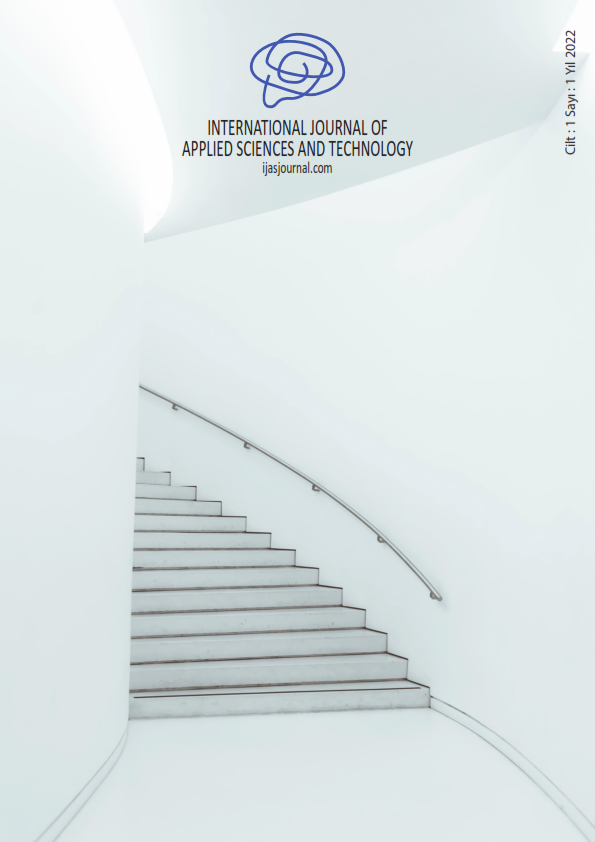FOOD HABITS AND NUTRITIONAL STATUS OF FIJI RUGBY PLAYERS
Anahtar Kelimeler:
Fiji rugby, Food habits, Physical fitness Training meals,Özet
The 15-a-side Fiji rugby team trains well in preparations for any rugby competition but rarely performs to expectations. In order to help the Fiji local based rugby players to identify some key basic areas in improving their performance, a series of workshops were conducted to assess their nutritional status and dietary habits in relation to energy demand during rugby matches. The nutrition workshop included the administration of questionnaires to 19 local based rugby players, requesting the following information: usual food intakes, training camp food intakes, carbohydrate loading, pre-game meals and post-game meals. The study revealed that poor eating habits of the players resulted in the low carbohydrate intake, which may have contributed to increase levels of fatigue leading to loss of stamina even before the second half of the game. It appears that the diet of most 15-a-side players does not provide enough energy to enable them to last the full eighty- minutes of the game.
Referanslar
L. Burke and V. Deakin, in Clinical Sports Nutrition, 3 rd ed.: McGraw- Hill, 2006.
R. Wildman and B. Miller, Sports and Fitness Nutrition. Thomas and Wadsworth, Australia.
C. Wilborn and D. Willoughby, “The role of dietary protein intake and resistance training on myosin heavy chain expression,” J. International Society Sports Nutr. , vol. 1, pp. 27-34, 2004.
C. Kerksick, T. Harvey, J. Stout, B. Campbell, C. Wilborn, R. Kreider, “International society of sports nutrition position stand: Nutrient timing,” J. International Society Sports Nutr. , vol. 5, pp. 1-17, 2008.
J. Berardi, E. Noreen, and P. Lemon, “Recovery from cycling time trial is enhanced with carbohydrate-protein supplementation vs isoenergetic carbohydrate supplementation. J. International Society Sports Nutr. , vol. 5, pp. 24-34, 2008.
W. Chao, E. Askew, D. Roberts, S. Wood and J. Perkins, “Oxidative stress in humans during work at moderate altitude,” J. Nutr., vol. 129, pp 2009-2012, 1999.
(7)J. Nelson, P. Bernstein, M. Schmidt, M. Tress and W. Askew, “Dietary modification and moderate antioxidant supplementation differently affect serum carotenoids, antioxidant levels and markers of oxidative stress in older humans,” J. Nutr. vol. 133, pp. 3117-3123, 2003.
R. Jenkins and A. Goldfarb, “Introduction: oxidant stress aging, and exercise,” Medicine and Science in Sports and Exercise, vol. 25, pp. 210-212, 1993.
M.M. Kanter, “Free radicals, exercise and antioxidant supplementation,” International J. Sports Nutr., vol. 4, pp. 205-220, 1994.
L. Burke, in The complete guide to food for sports performance: Peak nutrition for your sports, 2 nd ed. : Mc Graw-Hill, 1995.
S.G. Eberle, in Endurance sports Nutrition: Eating plans for optimal training, racing and recovery, Human Knetics. [12] J. White, J. Wilson, K. Austin, B. Greer, N. John and L. Panton, “Effect of carbohydrate-protein supplement timing on acute exercise-induced muscle damage,” J. International Society Sports Nutr., vol. 5, pp. 1-7, 2008.
M. Marcil, A. Karelis, F. Peronnet, and P. Gradiner, “Glucose infusion attenuates fatigue without sparing glycogen in rat soleus muscle during prolonged electrical stimulation in situ,” European J. Applied Physiology, vol. 93, pp. 569-574, 2005.
J. Hoffman, J. Kang, N. Ratamess, M. Hoffman, C. Transchina, and A. Faigenbaum, “Examination of a pre-exercise, high energy supplement on exercise performance,” J. International Society Sports Nutr., vol. 6, pp. 1-8, 2009.
J. Kirwan, R. Hickner, K. Yarasheski, B. Kohrt, B. Wiethop and J. Holloszy, “Eccentric exercise induces transient insulin resistance in healthy individuals,” J. Applied Physiology, vol. 72, pp. 2197-2202, 1992.
National Food and Nutrition Center, Fiji Nutrition Survey Main Report, Suva, Fiji, 2007.
C. Williams and L. Serratosa, “Nutrition on match day,” J. Sports Science, vol 24, pp. 687-697, 2006.
C. Chryssanthopoulos, W. Williams, C. Nowitz and G. Bogdanis, “Skeletal muscle glycogen concentration and metabolic responses following a high glycemic carbohydrate breakfast,” J. Sports Science, vol. 22, pp. 1065-1071, 2004.
D. Thomas, J. Brotherhood, and J. Brand, “Carbohydrate feeding before exercise: Effect of glycemic index,” International J. Sports Medicine, vol. 12, pp. 180-186, 1991.
C. Wu and C. William, “A low glyecemic index and meal before exercise improves endurance running capacity in men,” International J. Sports Nutr. Exercise Metab, vol. 16, pp. 510-527, 2006.
J. Wismann and D. Willoughby, “Gender differences in carbohydrate metabolism and carbohydrate loading,” J. International Society Sports Nutr., vol. 3, pp. 28-34, 2006.
E. Coyel, A. Coggan, M. Hemmert and J. Ivy, “Muscle glycogen utilization during prolonged strenuous exercise when fed carbohydrate,” American Physiological Society, pp. 165-172, 1986.
J. Kirwan, D. O’Gorman, and W.A. Evans, “A moderate glycemic meal before endurance exercise can enhance performance,” J. Applied Physiol., vol. 84, pp. 53-59, 1998.
A. Jeukendrup, A. Wagenmakers, J. Stegen, F. Gijsen, F. Brouns, and W. Saris, “Carbohydrate ingestion can completely suppress endogenous glucose production during exercise,” American J. Physiol ,Endocrino. and Metab., Vol. 276, pp. E762-E683, 1999.

İndir
Yayınlanmış
Nasıl Atıf Yapılır
Sayı
Bölüm
Lisans
Telif Hakkı (c) 2022 International Journal of Applied Sciences and Technology

Bu çalışma Creative Commons Attribution-NonCommercial 4.0 International License ile lisanslanmıştır.
